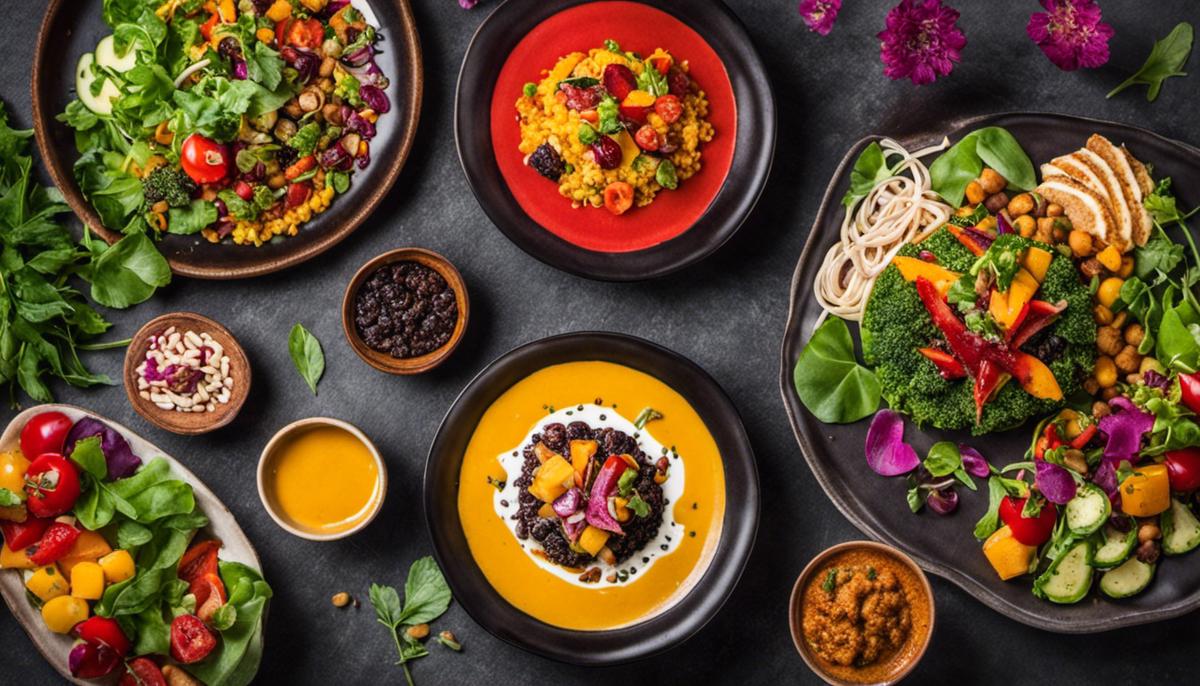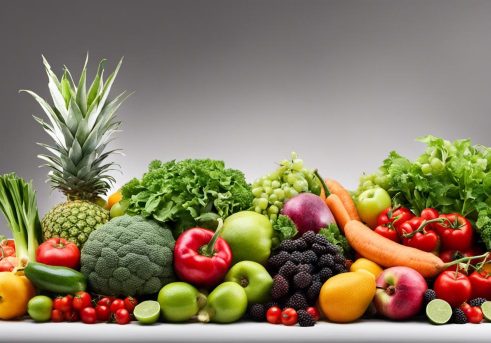Plant-based diets are rapidly gaining popularity as an effective way to improve health, reduce carbon footprint, and show compassion for animals. Diving into a completely new dietary lifestyle, however, can feel overwhelming. It’s not just about identifying plant-based foods, but also mastering techniques to cook them, preserving their goodness, and finding day-to-day variety. This document aims to demystify these aspects, introducing you to the fundamentals of a plant-based diet, equipping you with tools for efficient meal planning, and inspiring you with diverse cooking techniques to keep your plant-based journey interesting.
Understanding the Principles of a Plant Based Diet
Embracing Green Gastronomy: Discovering the Fundamental Principles of A Plant-Based Diet
If gastronomy embodies expressions of culture, creativity, and connection, a plant-based diet might very well be its most vibrant ally. As global perspectives shift towards the pinnacle of healthful and sustainable eating, many are favorably eyeing the plant-forward tables. They are swayed not just by the promise of longevity but also the rush of discovering a colorful cuisine that is as delicious as it is responsible.
1. Limit Animal Products, Love Plant-Originated Fare
At its core, a plant-based diet emphatically prioritizes foods sourced from plants. While not entirely averse to manageable inclusions of animal products like meat, dairy, and eggs, the ethos champions plants as heroes of the plate. Think in terms of plentiful fruits, vegetables, legumes, seeds, nuts, and whole grains – it’s an alluring world of texture, color, and unending flavors waiting to be explored!
2. Whole Foods over Processed
The plant-based clarion call reverberates for whole foods that continue to retain their wholesome essence. It’s about bidding adieu to heavily processed, refined products that hardly resemble their original, nutrient-rich selves. This disciplined exclusion extends to unhealthy crosses like white flour, sugar, and fast-food. It’s time to fall in love with the true, untampered flavors of nature.
3. Encourage Healthy Fats:
It’s a common misconception that a plant-based diet discourages all fats. On the contrary, it encourages the right kind – the healthy fats. Avocados, nuts, seeds, and olives, their oils, and omega-3 from flaxseeds and walnuts are not only great sources of these healthy fats, but they also make for flavorful companions in dishes.
4. Frequent, Small Portions:
A wise approach to a plant-based diet advocates for small portions spread over the course of the day. These frequent meals ensure that the metabolic fire keeps burning, translating to efficient digestion. It can inspire culinary creatives to come up with a variety of nutritious snacks that are as filling as they are delightful.
5. Stay Hydrated:
One principle that certainly doesn’t change, regardless of dietary preferences, is the importance of hydration. A diet rich in fiber, as is a plant-based one, calls for an ample water intake that helps the body run smoothly. It’s the simplest, yet the most overlooked aspect of not just healthy food relationships, but also holistic well-being.
Venturing into a plant-based lifestyle can unfold like a hypnotic dance between culinary exploration and profound commitment to the environment’s wellbeing. It opens up a thrilling world of flavors that are well within reach in local farms or grocery stores. From vibrant antioxidant-filled salads, protein-packed legume bowls, to mouthwatering whole grain baked goods, plant-based gastronomy offers a modern, refreshing take on food, one delicious bite at a time.

Plan and Organize Your Plant-Based Meals
Laying the Groundwork for Delectable Plant-Based Meal Planning
Excitement echoes within the culinary sphere as waves of individuals lean towards plant-based meal planning. With taste buds blurring the line between free-spirited adventurers and strict critics, adhering to a plant-based lifestyle shouldn’t mean sacrificing flavor. Here are a few more nuggets of wisdom for those embarking on this botanical journey.
- Be Experimental With Proteins: Shatter the myth that protein solely comes from meat. A vast selection of plant-based protein sources such as quinoa and lentils beckon your culinary exploration. Tempeh and tofu are blank canvases waiting to be infused with flavors, so don’t shy away from these protein powerhouses.
- Clock in the Fiber: Fiber is an all-star component in plant-based meals. Including more fiber-rich foods like broccoli, artichokes, and oats will not only keep you satiated longer, but it also helps maintain good gut health.
- Spice it Up: Herbs and spices are your toolbox to diversify your palate. Exotic spices like turmeric, fenugreek, or sumac can bring new life to well-loved classics, while fresh herbs can provide a bright, fresh dimension. Don’t limit yourself—let your creativity loose in the spice aisle.
- Batch Cooking and Meal Prep: Cooking in batches ensures your plant-based meals are conveniently prepared and ready when you are. Tap into the powers of meal prepping by assorting a week’s worth of meals, keeping your culinary routine vibrant and efficient.
- Mind your Micros: Underneath the broader concept of ‘health’ exist micronutrients—those essential vitamins and minerals easily overlooked but crucial for optimal health. With plants as wholesome sources, don’t forget to toggle between your vitamin A rich sweet potatoes, vitamin C-packed bell peppers, and every green leafy vegetable in between for your iron and calcium needs.
- The Wonders of Whole Grains: Integral for providing that slow-release energy, whole grains like brown rice, buckwheat, and barley are star players in plant-based diets. These nutrient powerhouses round out meals and keep your energy levels steady throughout the day.
This culinary voyage swells with vibrant veggies, enduring energy, and exploration of ingredients. As you organize and plan your plant-based meals, let, let these factors ardently guide you towards a healthier, delicious, and decidedly plant-forward lifestyle. After all, food is more than just fuel. It’s an expression of love, tradition, and the very essence of who we are.

Cooking and Prepping Techniques for Plant-Based Meals
Title:
A Savory Sauté: Mastering the Culinary Art of Cooking Plant-Based Foods
When it comes to the culinary arts, there’s a whole universe of flavors and techniques just waiting to be explored, especially when it comes to the vibrant world of plant-based foods. A veritable cornucopia of colors, textures, and tastes is at your fingertips once you master the knack of cooking these natural powerhouses in a way that heightens, rather than dulls, their innate goodness.
Roasting, for instance, is an enviable method that can do wonders for plant-based foods, imbuing them with a caramelized exterior that adds an entirely new flavor dimension. Be it the earthy beetroot, the versatile cauliflower or the humble Brussels sprout, roasting vegetables unfolds their hidden complexities and creates incredible depth of flavor.
Next on our list is grilling. Evoking the smoky, hearty tastes of summer, grilled veggies are not only lip-smackingly satisfying but also loaded with natural sweetness and a hint of savory char. Move over burgers, eggplants, and bell peppers are about to steal your thunder!
Steaming, the most delicate method of cooking, preserves essential nutrients and natural flavors remarkably. Taking a distinctly Asian culinary approach, a bamboo steamer is a worthy addition to your arsenal. From delicate Bok Choy to crisp asparagus, light and healthy doesn’t have to be flavorless.
Now, let’s talk stir-frying. For a quick, flavorful meal, nothing quite beats the turbocharged method of stir-frying. A dash of sesame oil, a sprinkle of red chilies, and a medley of colorful veggies stir-fried to perfection, topped off with a drizzle of tamari – isn’t that a tantalizing picture?
Of course, we’d be remiss not to mention braising. The slow, patient art of braising brings out a luxuriant tenderness in tougher veggies, such as collard greens and kale. Simmered in a flavorful liquid, braised veggies are a class act served alongside a serving of quinoa or whole grains.
Last but not least, let us not forget about fermenting, a method as old as time. The tangy zing of kimchi, the robust kick of sauerkraut, or the creamy tartness of non-dairy yogurt; fermenting not only increases the longevity of plant-based foods, but it also provides a healthful bounty of probiotics.
However you slice it, the artistry that goes into cooking plant-based foods is an adventure in every sense. Whichever cooking method you choose, remember to savor the journey as much as the destination and open up to the endless possibilities that plant-based foods have to offer.
Add a pinch of this, a dollop of that, imbue it with love, and you’ve got something that transcends the boundaries of the edible and becomes a symphony that feeds not just your body, but your soul. So chefs, aprons at the ready, it’s time to roll up your sleeves and immerse yourselves into the heart-stirring world of plant-based cooking!

Armed with the right knowledge and tools, transitioning to and maintaining a plant-based lifestyle becomes truly achievable. Understanding what attributes define a plant-based diet, organizing your meals effectively, and learning a variety of cooking techniques will only enrich this journey, ensuring that it is not monotonous. Engaging with this lifestyle change, you’ll likely discover an abundance of flavors and meals you may not have considered before. Not only does a plant-based diet present an opportunity to enhance your personal health, but it’s also a chance to positively impact our planet and its vast array of species.





